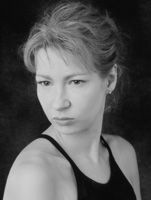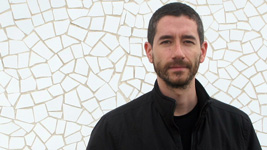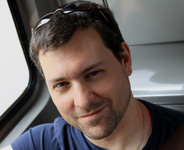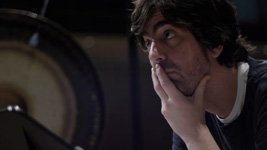UK Tour
“…a very exciting prospect to both audiences and composers in England” – Sound and Music
Program
Patricia Alessandrini: Esquisses pour alphabet de ténèbres
for flute, clarinet, piano, percussion, violin, cello and electronics
Pedro Alvarez: New forms of asymmetry
for solo guitar and ensemble
Diego Castro Magas, guitar
Martin Iddon: crinaeae
for flute, clarinet, piano, percussion, violin, cello
Mauricio Pauly: El teléfono en reposo pero atento
for amplified ensemble and live electronics
Performances and events
International Anthony Burgess Foundation Manchester
17 November 2015, 7:30pm
Clothworkers Centenary Concert Hall, University of Leeds
18 November 2015, 7:30pm
Goldsmiths University London, Deptford Town Hall Council Chambers
19 November 2015, 7:30pm
Ensemble-in-residence at Goldsmiths University London
12 – 21 November 2015
Open rehearsal, Goldsmiths University London
20 November 2015, 10am–1:30pm
In November 2015 Ensemble Interface is heading to the United Kingdom for a touring project, featuring new pieces by Patricia Alessandrini, Pedro Alvarez, Martin Iddon and Mauricio Pauly, plus workshop activities in collaboration with UK universities.
One of the purposes of this project is to support the development and performance of pieces by UK-based composers, all the while encouraging the exchange between composers, ensemble and audience through various workshop formats. Performances will be accompanied by workshops for students and open panel discussions for the audience, purposing to deepen the interest and the understanding towards this repertoire.
The tour is meant to be the starting point of a long-term collaboration, including a recording project, cooperating with CD labels in Germany and England, featuring also collaborations with UK-based ensembles and broadening the scope to more composers from both countries.
The project has been granted support by the Sound and Music Touring Programme. Ensemble Interface achieved this award after entering into a competitive process with over 70 other applicants. In Sound and Music’s view, Interface project “offers a very exciting prospect to both audiences and composers in England”. The project is also supported by the Britten-Pears Foundation and the Goethe-Institut.
 Alphabet de ténèbres(hommage à Ligeti) will allow the pianist of the Ensemble Interface to pilot the ensemble parts and live electronics by playing, in alternation, on a keyboard and a piano, using special touch-sensing technology. She will do this by playing an existing series of pieces, a selection of études by Ligeti (from Book #1), in a manner not entirely audible to the public, focussing on the instrumental gesture, thus be playing one piece in order to unfold an entirely different piece of music: my own composition, which is in turn based on various settings of the Lamentations of Jeremiah. Her tempo and expressivity (as measured by rubato and amplitude) will shape the expressivity of the instrumental parts. The communication between her performance and the instrumental parts will be obtained through some very simple programs I will install on each player’s iPhone, Android, or other personal device (using PD and MobMuPlat, a special framework for smartphone programming). The devices will in turn provide audio and visual cues which will guide the performers through the score. This will be particularly important for the microtonal tunings, and for moments in which the performers use their voices.
Alphabet de ténèbres(hommage à Ligeti) will allow the pianist of the Ensemble Interface to pilot the ensemble parts and live electronics by playing, in alternation, on a keyboard and a piano, using special touch-sensing technology. She will do this by playing an existing series of pieces, a selection of études by Ligeti (from Book #1), in a manner not entirely audible to the public, focussing on the instrumental gesture, thus be playing one piece in order to unfold an entirely different piece of music: my own composition, which is in turn based on various settings of the Lamentations of Jeremiah. Her tempo and expressivity (as measured by rubato and amplitude) will shape the expressivity of the instrumental parts. The communication between her performance and the instrumental parts will be obtained through some very simple programs I will install on each player’s iPhone, Android, or other personal device (using PD and MobMuPlat, a special framework for smartphone programming). The devices will in turn provide audio and visual cues which will guide the performers through the score. This will be particularly important for the microtonal tunings, and for moments in which the performers use their voices.
A numerical system relating to the original scores of the Ligeti will relate to the Hebrew letters which begin each verse of the Lamentations. The piece will reference settings by Tallis, Couperin, Palestrina, Lasso, Victoria, Zelenka, and others. I hope in this manner to use abstract materials – the letters of the alphabet – to convey emotional states. _ Patricia Alessandrini
 New Forms of Asymmetry – Neither descriptive nor programmatic, the title is rather a literary ‘found object’; a serendipitous conceptual catalyst for a single episode in a larger creative quest that seeks to put form, rather than material, at the centre of aesthetic enquiries. The fragile relation between acoustic guitar and ensemble, not only in the deliberate instrumental writing but also in the different nature of their sound projection, facilitates the necessary reinvention of a ‘concertante’ dialectics. _ Pedro Alvarez
New Forms of Asymmetry – Neither descriptive nor programmatic, the title is rather a literary ‘found object’; a serendipitous conceptual catalyst for a single episode in a larger creative quest that seeks to put form, rather than material, at the centre of aesthetic enquiries. The fragile relation between acoustic guitar and ensemble, not only in the deliberate instrumental writing but also in the different nature of their sound projection, facilitates the necessary reinvention of a ‘concertante’ dialectics. _ Pedro Alvarez
 In Greek mythology, the crinaeae were the naiads, water nymphs, who protected and dwelled in fountains and wells. Sacred fountains and wells were intimately linked with inspiration in the Greek world: the Hippocrene fountain on Mount Helicon, formed by the hooves of Pegasus, was sacred to
In Greek mythology, the crinaeae were the naiads, water nymphs, who protected and dwelled in fountains and wells. Sacred fountains and wells were intimately linked with inspiration in the Greek world: the Hippocrene fountain on Mount Helicon, formed by the hooves of Pegasus, was sacred to
the Muses, and the Pirene fountain in Corinth, where Pegasus himself would drink, was visited by Roman poets in search of inspiration. Other fountains, like those at Delphi, were fed by the Castilian Spring, and thus were intertwined with sites of prophecy. As Robin Lane-Fox has it, ‘wherever there was water, there was a possible source of prophecy’.
Like numerous other of my pieces—most particularly hamadrayds (2010) and the other pieces named for the individual hamadryads, such as Ptelea (2014), all of which make use of readings of Josquin’s Nymphes des bois in order to generate pitch material—crineae utilises a high Renaissance source in the background, here Dufay’s isorhythmic motet, Salve flos tusce gentis, which concerns itself with the naiads. Highly active on the rhythmic level, but extremely quiet—always on the borders of silence—and with a broadly static set of pitch materials—deployed most often as points, extended lines, or brief glissandi—crinaeae is composed of individual part books, with no score, such that the fine details of the piece are highly determined, but points of entry and, indeed, form in a broader sense, occurs in the moment of performance.
crinaeae is a part of a larger cycle of pieces, each named for a particular type of naiad, begun with eleionomae (premiered by Distractfold in 2013), and will continue in limnades, potameides, and pegaeae. _ Martin Iddon
 The new piece Patrulla palinodia by Mauricio Pauly will be the fifth in a series of works where amplification is actively controlled by the ensemble via stomp-boxes as an integrated form of articulation, resonance and live electronics. Extreme synchrony and virtuosic instrumental control coalesce to form a body of sound which shifts in mass and depth, falls apart and blends again, discovering its own shape as it moves forward.
The new piece Patrulla palinodia by Mauricio Pauly will be the fifth in a series of works where amplification is actively controlled by the ensemble via stomp-boxes as an integrated form of articulation, resonance and live electronics. Extreme synchrony and virtuosic instrumental control coalesce to form a body of sound which shifts in mass and depth, falls apart and blends again, discovering its own shape as it moves forward.



